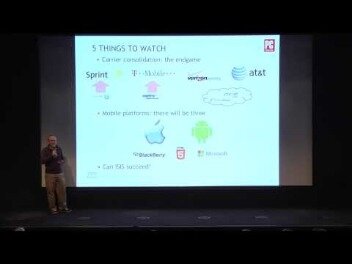Content

And that’s why a growing crop of startup software and technology companies are mining this fast-evolving e-commerce space. Of course, we often see posts on basic mobile marketing and making your website more mobile device friendly which are discussed here as well. But it’s also helpful to see the various management options including, banking, scheduling, invoicing etc. that are available through increasingly plentiful mobile apps. Uyen Nguyen owner of Lemongrass Truck, a growing food truck business, reckons her budding company would be nowhere at all without mobile technology. Her company uses tablets to take credit card payments at points of sales and uses social media to let mobile customers know where their truck will be located from day to day. Mobile technology makes sense to Nguyen because her whole business is mobile. IT teams must take into account the carrier service plans that go with implementing mobile devices.
- The mobile trend has turned business operations smoother and swifter than before.
- If a business knows where a user is, it can send them targeted ads based on the location.
- We also calculated the growth rate, over the past three years, of the laggards, followers, and leaders in participating micro, small, and medium businesses.
- In less than 15 years, 3G and 4G technologies have reached 3 billion subscriptions, according to Ericsson, making mobile the most rapidly adopted consumer technology in history.
- Experts believe that by 2020 the global revenue from mobile apps will be $190 billion.
It is mandatory to procure user consent prior to running these cookies on your website. You can get an MBA in digital marketing just by studying these guides. For example, let’s say you’ve got an iPhone that was released in the last couple of years.
The Business Value Of Wireless Technology
Much of this investment is poured into technologies that never reach the market. For those technologies that do, it is critical to have a predictable and market-driven process for licensing IP. As noted earlier in this report, mobile players invested an aggregate of $1.8 trillion in capex and R&D from 2009 through 2013 and are expected to invest approximately an additional $4 trillion between 2014 and 2020.
Mobile technologies are a critical driver of the world economy, generating global revenue of almost $3.3 trillion. (See Exhibit 3.) The mobile revolution has accelerated innovation worldwide, boosting global GDP and creating new jobs across a vast array of industries.
It used to be the mark of a mover and shaker to have a “work phone”. It suggested that you were important enough to be on-demand – a jet-set executive with the latest technology.
At the same time, the selected devices must be able to handle all the apps they need to run, or those devices will end up being of little use to anyone. IT teams must also ensure back-end systems are able to handle the additional workloads that come with mobile devices, and that those devices and their apps can integrate with the back-end systems. In fact, system integration is often one of the greatest challenges that organizations face when mobilizing their workforces, especially when it comes to legacy systems that don’t support today’s open standards.
Added more to the point, the introduction of e-wallet, Google Pay, Google mobile payments apps and other payment application drive your generation to stick with online payments. As what the topic is about, there will be an inclined increase in the mobile application and its technologies. Though this built up a new opportunity for developers to create new trends, the real problem lies in storage. With increasing number of users utilizing on demand applications things are getting more interesting in applications as of now right from its introductory year. With the expected growth of reaching 400 million beacons by 2020, it is the right time to learn about the trends of Beacon technology. Year by year technology keeps updating with new design and service that could improve the user interface and user experience. Based on the statistical report only 50% of apps are downloaded of which 21% of apps are used only once.
The Mobile Value Chain
Among them, many of the AR applications are games like the popular one Pokémon Go which earned hearts of youngsters worldwide. To succeed, organizations must blend digital and human capabilities. Our diverse, global teams bring deep industry and functional expertise and a range of perspectives to spark change.
Reportedly 85% of healthcare organizations have inbuilt IoT technology and its extent of reinforcement for 2020 will be endless for the higher degree of patient care. The listed technology trends are explained below with expected future scope. Our solution architects are ready to collaborate with you to address your biggest business challenges. By using Homecare Homebase software on Samsung tablets, McLaren Health improved patient care and prepared for business challenges.
Mobile Technologies Are Fueling Economic Growth, Driving Recovery From The Global Recession
Many of the benefits of using mobile technology center around improving communication. Cell phones keep businesses and employees connected with each other and customers both at the office or on vacation. It gives individuals the ability to communicate instantly and respond quickly to business situations. Laptops have become powerful computing devices that offer access to all of the applications needed to run a business, including accounting software, a Web browser or a database program. Mobile marketing reaches new and existing customers through a direct channel that helps with sending out special offers and tracking responses.
For our jobs estimates, we calculated revenues for each step in the value chain, based on global market research data and our global production model. The jobs figures were then derived by dividing these revenues by the revenue contributions per employee for each business. These revenue contribution factors are based on leading pure players in each country for each business model separately. Policymakers can support these tremendous private investments by ensuring that a robust IP framework is in place to protect patent rights and facilitate market-driven licensing. Weakening patent protection would reduce the incentives currently motivating innovators to develop technologies essential for transition to 5G and beyond.

Companies like T-Mobile have begun offering cloud-based services for mobile customers, including telephony features like voicemail, CallerID, conference bridges and more. Increasingly, these services will now be available for the small business market, too. This latest package is aimed at companies with 20 or fewer employees. Online marketing and SEO consultant Peter Semple gives two case studies showing how small businesses can do this. In one instance, a savvy auto mechanic sent out a direct mail piece with a QR code allowing customers to download his mobile app.
They should also familiarize themselves with various use cases to better understand the benefits of mobile devices in business. Shockingly, Concur’s research suggests that 70pc of British businesses still rely on paper or spreadsheets when it comes to filing expenses claims. But an increasing number of apps are focused on getting rid of paperwork altogether and enabling on-the-go employees to deal with documents, without the need to forward them to a PC. For small businesses, being able to deal with tasks such as expenses via a mobile app means big savings. It is easier to file VAT returns, and easy to check that employees are sticking to an expenses policy, for instance, putting money directly back into a small business.

Narrowing the divide could be especially important in countries like South Korea, where SMEs have struggled to compete against large conglomerates in recent years. Because access to mobile technologies is a powerful enabler of economic and social development, it is essential that the divide between mobile leaders and laggards be narrowed. In many economies, SMEs are responsible for up to 65 percent of all jobs, according to the Organization for Economic Cooperation and Development.
These next-generation devices incorporated location-based services through GPS, were compatible with Wi-Fi networks and Bluetooth, enabled picture sharing, and supported low-definition streaming video . Mobile technologies have transformed the way we live, work, learn, travel, shop, and stay connected.

